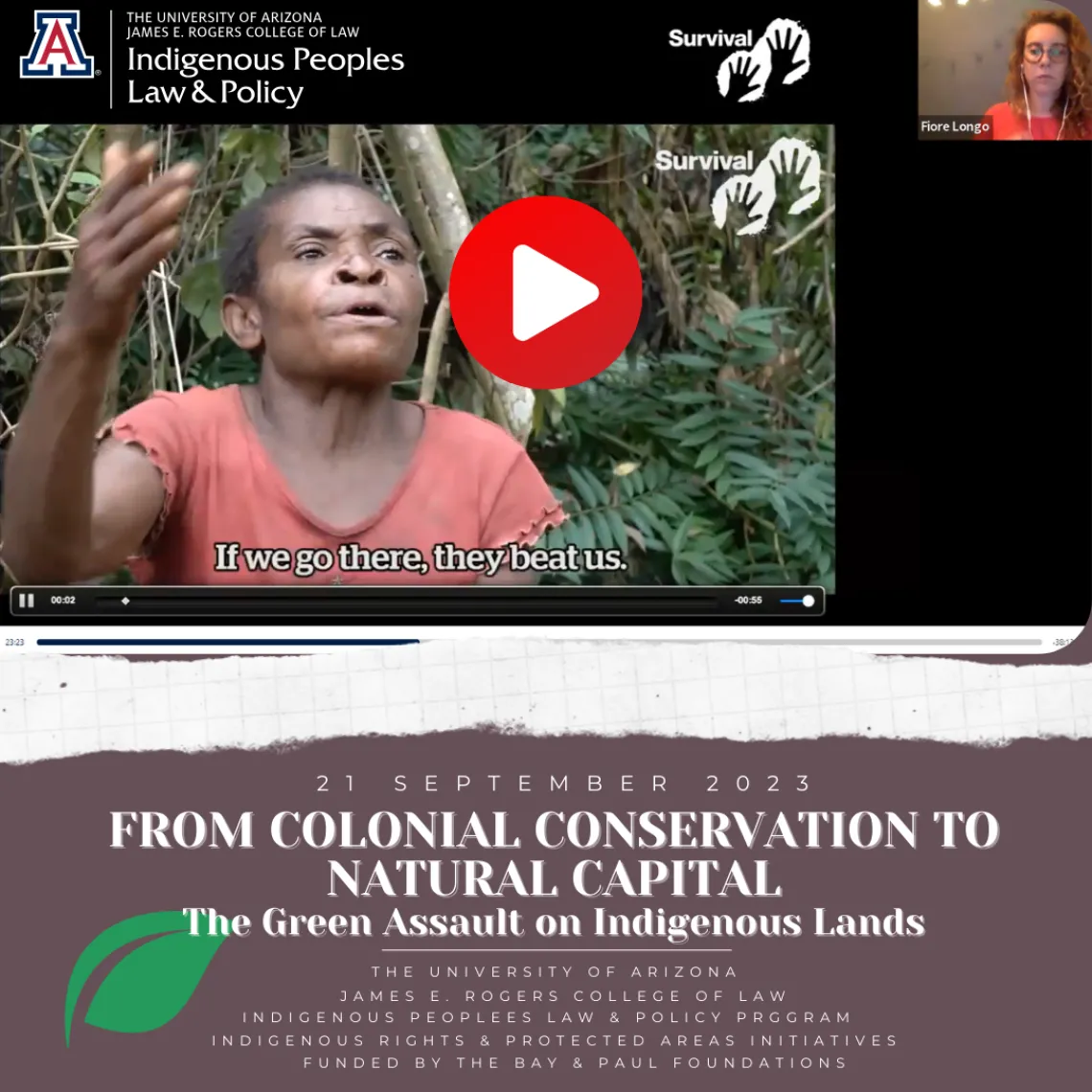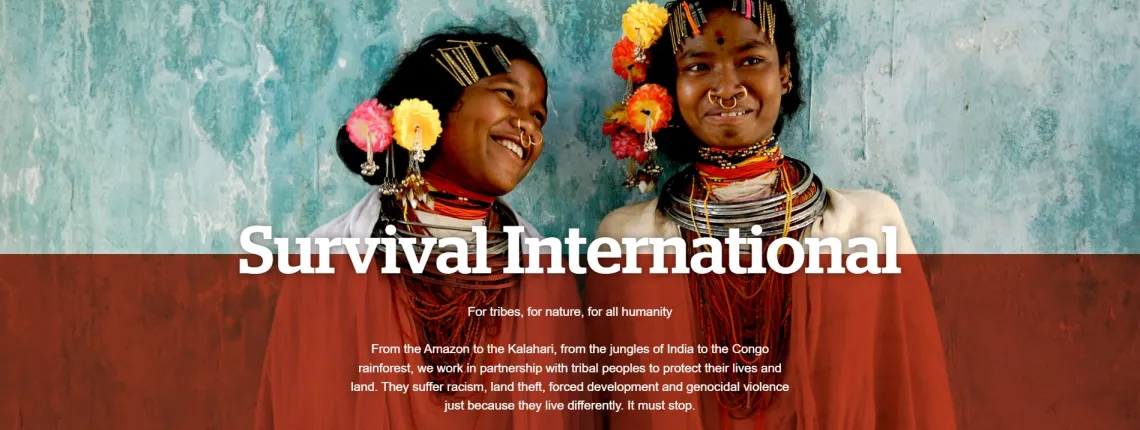VIDEO RECORDING: The Green Assault on Indigenous Lands

On the 21st of September, the IPLP Protected Areas Project, as a part of the Bay & Paul Foundations lecture series, hosted Fiore Longo from Survival International to deliver a webinar on the unfolding violence of fortress-style conservation against Indigenous Peoples throughout the world, financed by environmental corporations and Western government agencies.

Survival International is a human rights organization whose purpose is to radically change public opinion in favor of Indigenous Peoples self-determination and deconstruct the colonial and white supremacist foundations of many of these issues, stemming from the Global North. Over 100 people joined us from different parts of the world to listen to Fiore’s compelling presentation, which explored the insidious ways in which the imagery of conservation serves the purpose of colonial propaganda, invisibilizing Indigenous peoples from their own lands.
Fiore opened with the famous image of the ‘Liberation of Paris’ at the end of the Second World War, where non-white troops (who made up around 60% of the French military force) were deliberately kept from returning to France and therefore the photographic recordings of this historic event. She stated that the ‘invisibilisation’ of non-white people throughout history has had real consequences and is part of a violent colonial imaginary, which is the same propaganda of erasure that occurs in imagery of conservation. Fiore then compared this to images of National Parks such as the Serengeti, where we see only wildlife against the vast expanse of the Serengeti plains. No people or communities are present in the image as the Masai Indigenous Peoples have been forcibly dislocated from their lands over generations to make space for fortress-style conservation at the National Park.
Her then presentation spoke about the early history of Western conservation, interlocking with Europe’s Second Industrial Revolution, the expansion of colonial capitalism, and rise of pseudo-scientific racism in the 19th century. With colonialism and industrialisation being predicated on the exploitation of the Earth’s finite resources, propaganda about Indigenous peoples as harmful towards their own lands informed the creation of ‘conservation reserves’ to ‘protect nature’ and inspire the colonial imaginary of ‘wilderness’ (as removed from Indigenous life) for white colonial elites to enjoy. These harmful narratives persist in conservation spaces today, with the rise of green tourism in spaces that indigenous peoples are evicted/restricted from, the imagery of ‘poachers vs game hunters’ being heavily racialised within the media, and now the opportunism of turning Indigenous lands into unsustainable carbon credit schemes. International campaigns such as 30x30 essentially serve the ‘sustainability’ of neoliberal capitalism, concentrating global ‘solutions’ to climate change into fortress-style conservation while the real problems of land and resource exploitation persist, built upon the ongoing violence of colonialism.
Survival International’s #DecoloniseConservation campaign therefore seeks to reject the false imagery of Western conservation initiatives, instead highlighting the colonial and militarized violence that these protected areas are built on and continue to employ (such as forced evictions and extrajudicial killings), remembering the Indigenous lifeways that are at the heart of these lands, and honoring the necessity of Indigenous land-repatriation and self-determination in our journeys towards climate justice. You can read more about their campaign here: https://www.survivalinternational.org/conservation
A massive thank you again to Fiore Longo for sharing this incredibly insightful conversation as part of our IPLP Lecture Series on the colonial violence of protected areas.
Here is the link to the full recording of Fiore’s presentation;

